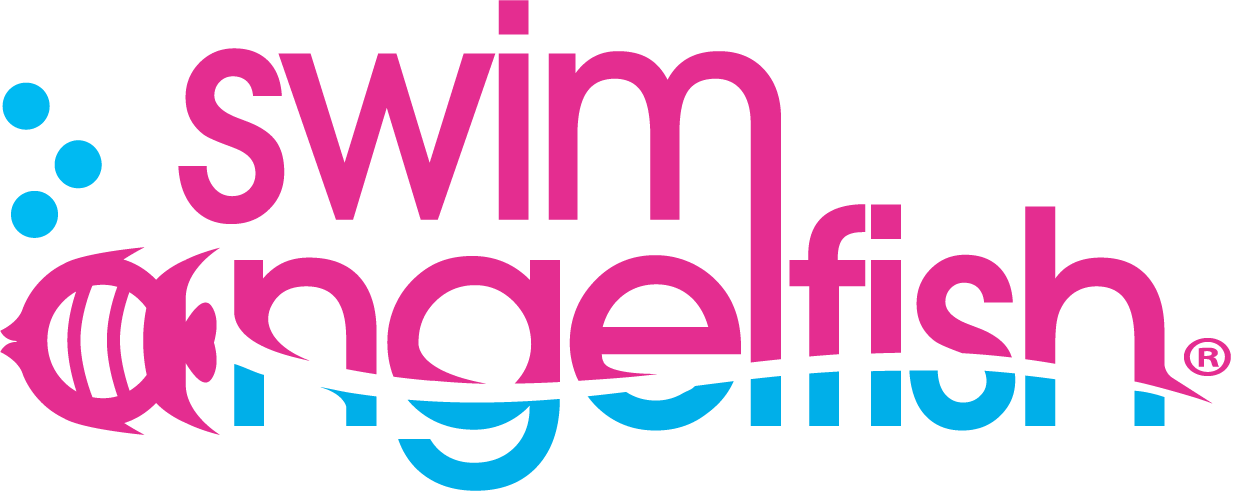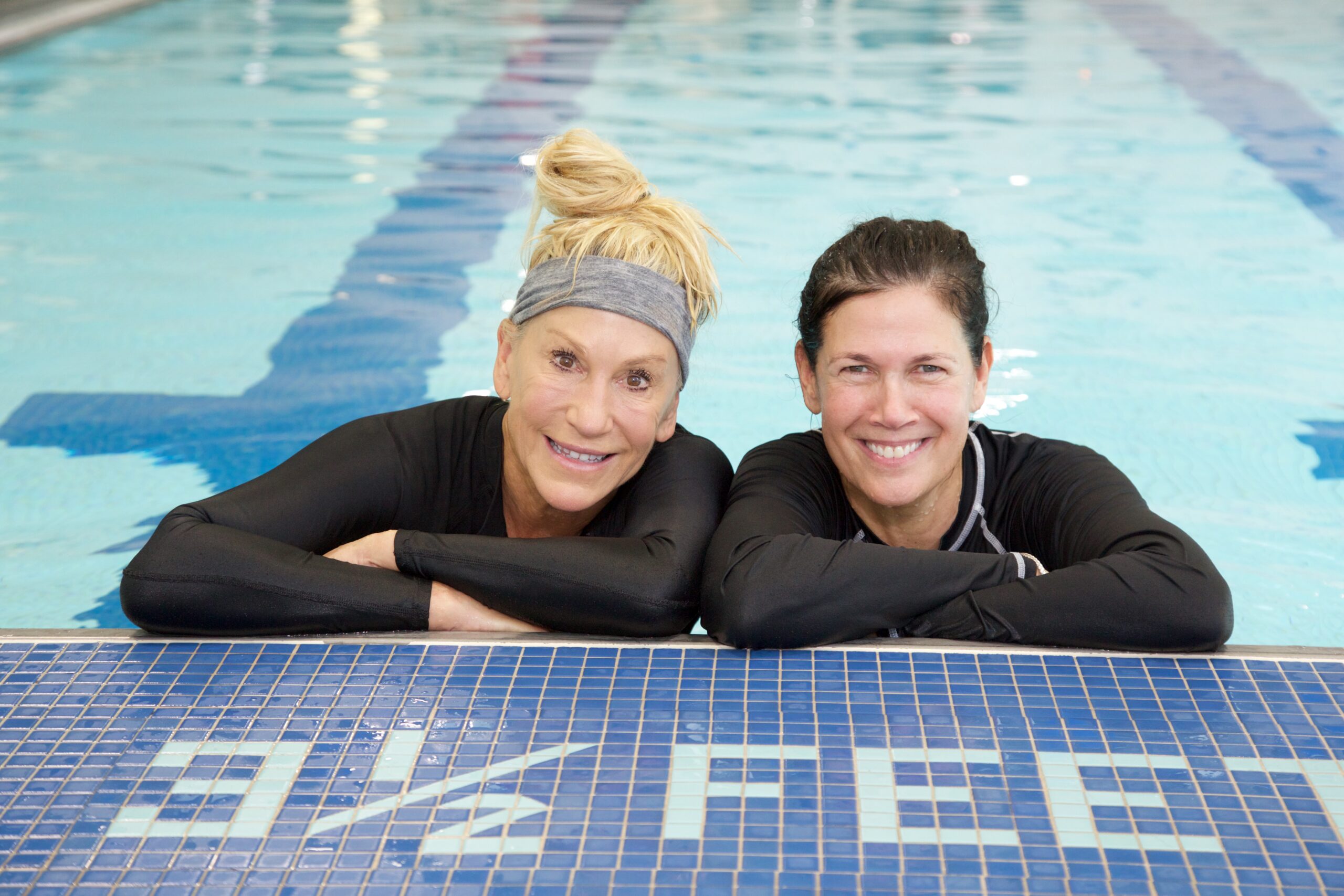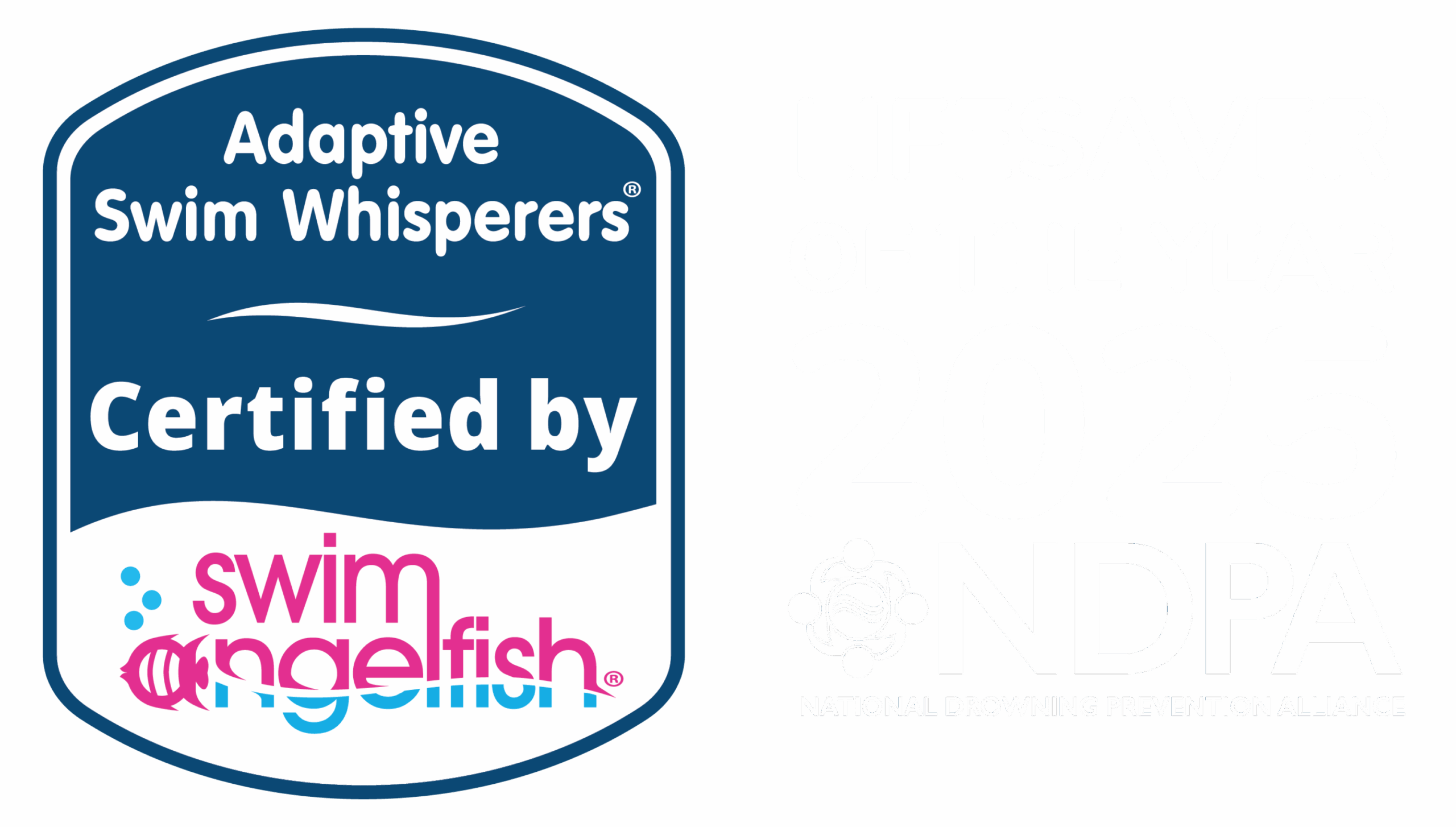
How do I group my special needs swimmers? This is a question many swim instructors and aquatic managers wonder about. Should we put a swim group together by swim ability, age, or maybe even by diagnosis? The answer is that there is no set recipe and flexibility is the key to success. Sometimes the most unlikely age, ability, and swim level will connect with each other and prove to be the best semi-private or small group.
At Swim Angelfish we strive to offer our adaptive swimmers multiple options for social interaction and group swim opportunities. We wanted to share 5 innovative ideas that will help you create adaptive swim groups to complement your swim program goals. Whether you are a parent, swim instructor, or diversity & inclusion director, these tips will open your mind to new program ideas.
5 Innovative Ideas for Creating an Inclusive Semi-private or Small Group Swim Class
Think about the strengths and unique abilities of your swimmers and how they might react in these various scenarios. Talk with their parents to agree on an approach to help them progress through these adaptive swim group options, in a time frame that will work best for their swimmer, and give these ideas a try:

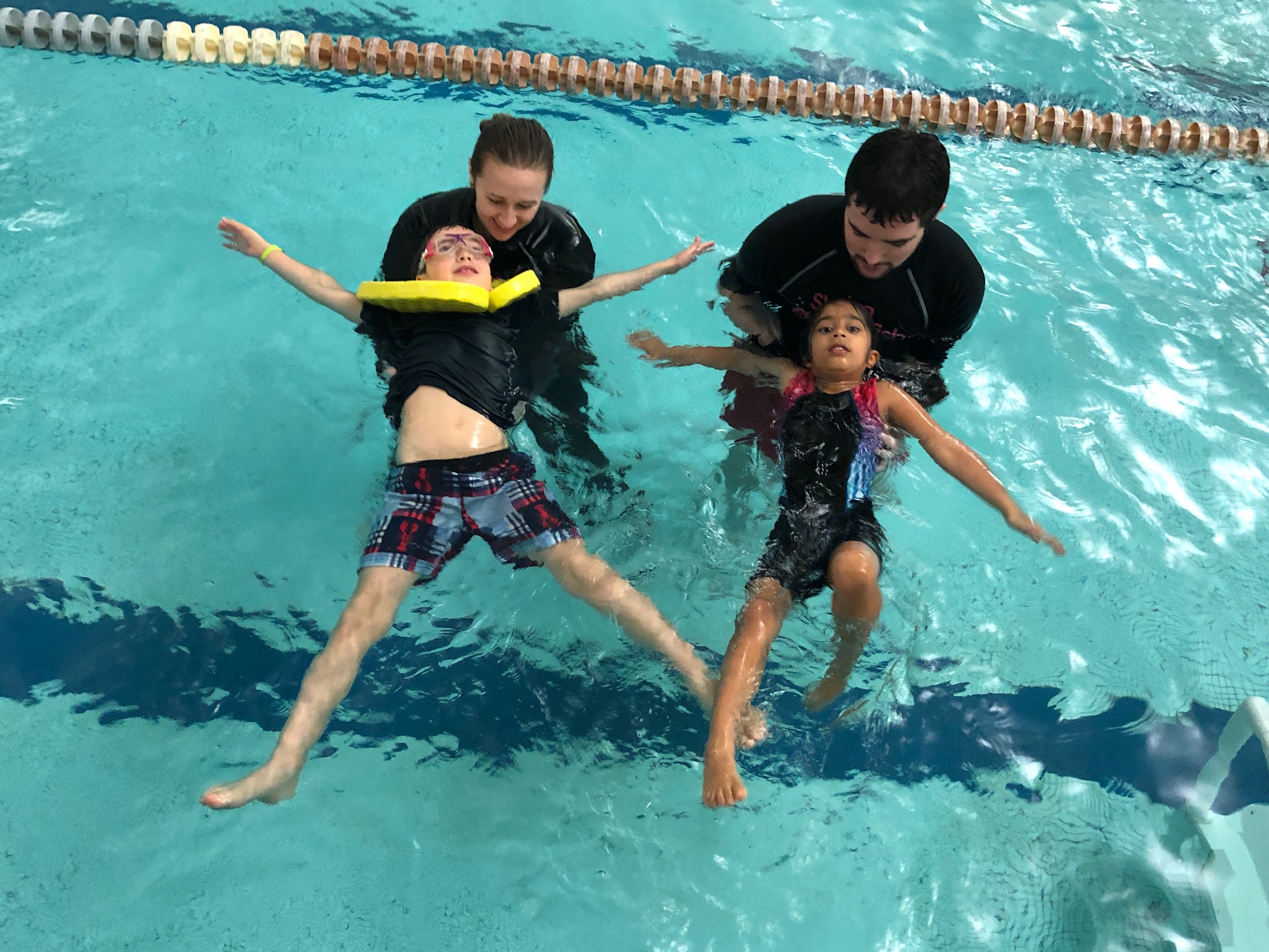
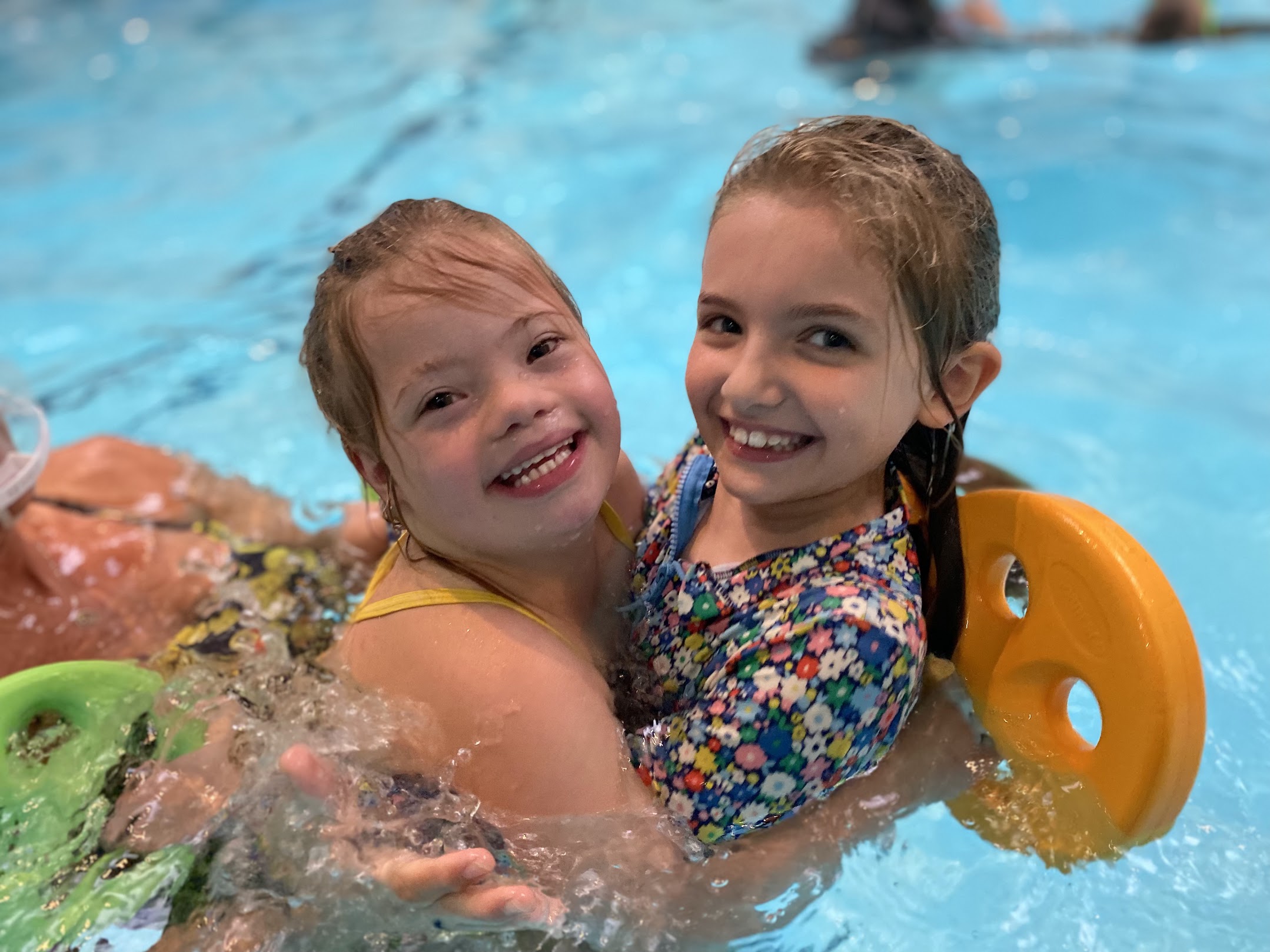

How to Keep Swimmers of Different Abilities Engaged in a Fast-Paced Swim Group or Team
Do you find it challenging to keep swimmers of all abilities engaged in your fast-paced swim groups? We share 4 creative tips to keep everyone motivated and participating, from sensory drills to leadership roles, all designed to build a strong, inclusive team environment.
